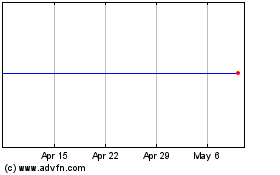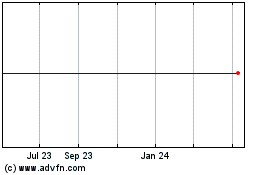BHP Sells Some Shale Acreage in Mixed Output Quarter
October 17 2017 - 6:31PM
Dow Jones News
By Robb M. Stewart
MELBOURNE, Australia--BHP Billiton Ltd. (BHP.AU) said work is
underway to exit its U.S. onshore oil-and-gas assets, after it sold
a small portion of its Hawkville shale acreage in Texas in the
recent quarter.
As expected, the Australian resources company increased the
number of drill rigs operating in the U.S. in a quarter where
onshore volumes continued to decline and overall petroleum
production weakened on a year earlier.
It was a mixed quarter across BHP's suite of commodities, though
it stuck with production and cost guidance for the full year and
said it remained on track to deliver 7% volume growth. Copper
output in the three months through September increased,
metallurgical coal production was steady, but output of iron ore
and energy coal were lower year-over-year.
The production numbers come a day ahead of BHP's annual meeting
of shareholders in London, the first that will be led by Ken
MacKenzie since he succeeded Jac Nasser as chairman last month.
Mr. MacKenzie, who had been a director at BHP for about a year
and previously led packaging company Amcor Ltd., took control of
the board under the shadow of activist investor Elliott Management
Corp.'s calls for sweeping changes, including an exit from U.S.
shale activities and a collapsing of its dual U.K.-Australia listed
structure around a primary listing in Sydney. After months of
campaigning by the New York hedge fund, BHP in August said it had
determined its U.S. onshore oil-and-gas acreage weren't core and
would in time be sold.
Overall petroleum production fell 8% on year to 50 million
barrels of oil equivalent, with U.S. onshore volumes down 16% to 17
million barrels, due in part to what the company said was natural
field decline as well as the impact of Hurricane Harvey in the Gulf
of Mexico. For the shale operation, the decline was partially
offset by additional wells in the Black Hawk, Permian and
Haynesville basins, it said.
BHP said it increased the number of onshore rigs in operation to
nine over the recent quarter, adding two rigs in the Permian region
and one each in the Black Hawk and Haynesville acreage.
The company has said it had more recently pivoted its focus back
to conventional oil and gas operations, including production in the
U.S. Gulf of Mexico and off Australia.
Among the company's other commodities, it said production of
copper rose 14% on-year to 404,000 metric tons as volumes increased
at the Escondida operation in Chile's Atacama Desert.
Output of metallurgical coal used in steelmaking was flat at 11
million tons, while iron-ore production slipped 3% to 56 million
tons partly due to planned maintenance and lower stockpiles after a
fire in June at an Australian mine. Production of thermal coal used
by power stations was down 2% on-year at 7 million tons, which the
company said reflected a strong performance at its New South Wales
division in eastern Australia offset by the impact of poor weather
at its Cerrejon operation in Colombia.
In August, BHP recorded a net profit of US$5.89 billion in the
12 months through June, a sharp improvement from a year-earlier
loss of US$6.39 billion when BHP absorbed an impairment hit on its
onshore U.S. oil-and-gas business and a charge for the fatal 2015
dam failure at the Samarco iron-ore operation in Brazil.
Write to Robb M. Stewart at robb.stewart@wsj.com
(END) Dow Jones Newswires
October 17, 2017 18:16 ET (22:16 GMT)
Copyright (c) 2017 Dow Jones & Company, Inc.
BHP (NYSE:BBL)
Historical Stock Chart
From Mar 2024 to Apr 2024

BHP (NYSE:BBL)
Historical Stock Chart
From Apr 2023 to Apr 2024
